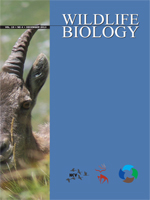We studied survival and cause-specific mortality of radio-marked capercaillie Tetrao urogallus females relative to habitat type in northern Sweden during 2000-2004. Our high-mountain area (1,600 km2) consisted of the alpine transition zone from Norway spruce Picea abies-dominated forest, mountain birch Betula pubescens and alpine heath. Our low-mountain areas consisted of two forest areas (300 and 160 km2) dominated by Scots pine Pinus sylvestris and characterised by more intensive forestry than the first-mentioned area. Predation was the most common cause of mortality in both the high-mountain (70%) and low-mountain (90%) areas. We attributed 10% of mortality in both areas to hunting. Collisions with cars and power lines were only documented in the high-mountain area. A Cox-proportional regression model stratified by year suggested that hazard was lower for yearlings and birds using low-mountain areas, but these estimates were associated with large uncertainties. Pooling all individuals showed an average annual survival probability of 0.68 (0.62-0.75; 95% CI), with no tendency for hazard to vary among seasons. Because survival of females was comparable to those reported in other studies and the harvest mortality was low, we suggest that the capercaillie population in the Swedish high-mountain region does not need any changes in the present management strategy.
How to translate text using browser tools
1 December 2013
Survival of female capercaillie Tetrao urogallus in northern Sweden
Per-Arne Åhlen,
Tomas Willebrand,
Kjell Sjöberg,
Maria Hörnell-Willebrand

Wildlife Biology
Vol. 19 • No. 4
December 2013
Vol. 19 • No. 4
December 2013
Capercaillie
habitat
harvest
predation
survival
Tetrao urogallus




